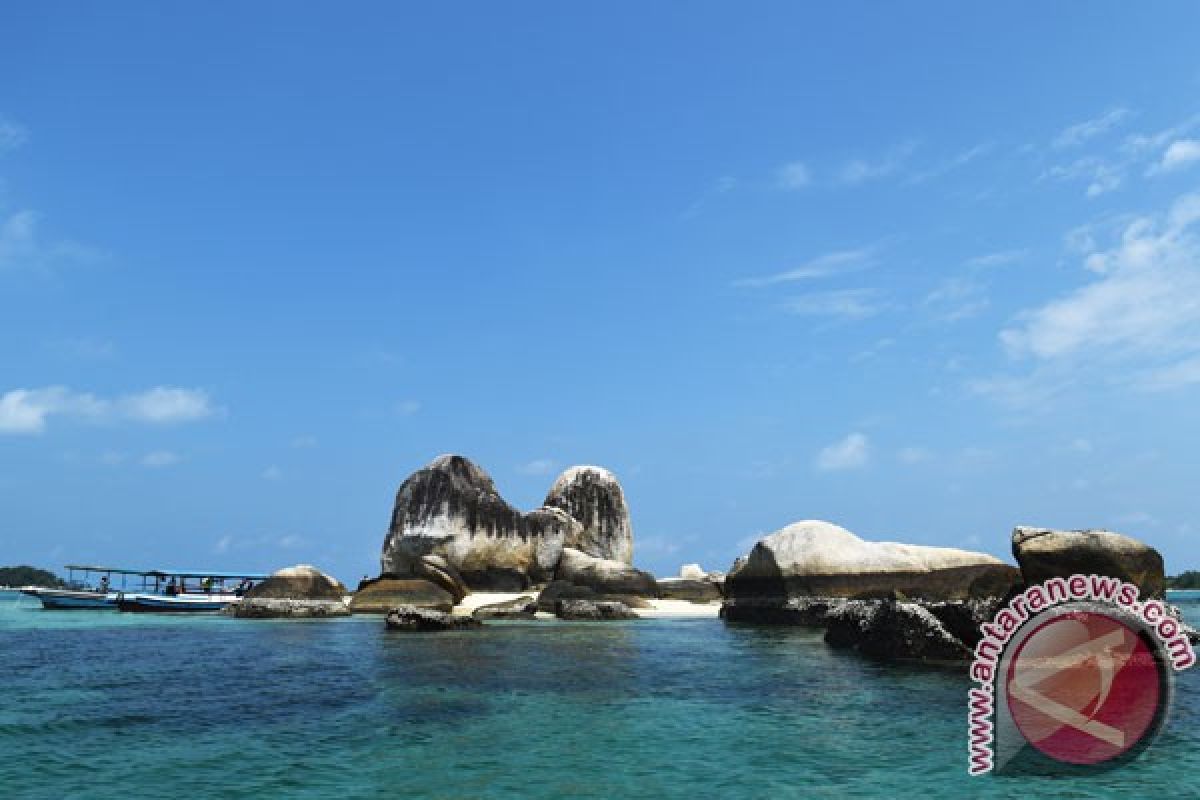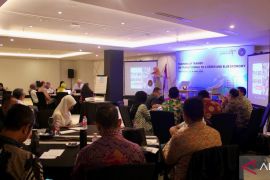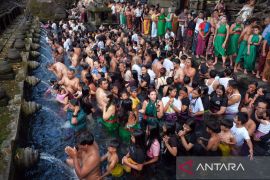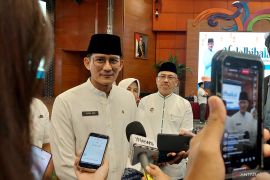Most of the tourist destinations there are ready to welcome the tourists with regard to their safety and facilities based on the standard operating procedures.
Among the most popular tourist destinations in Central Java are Borobudur, Prambanan, and Ratuboko Temples.
PT Taman Wisata Candi Borobudur (TWCB) spokesman Chrisnamurti Adiningrum remarked in Magelang, Central Java, on Monday that several additional attractions have been prepared to greet and entertain tourists visiting the Borobudur Temple during the 2015 Lebaran holidays.
"The number of visitors to Borobudur Temple is expected to culminate on July 18-19, 2015, thereby leading to an increase of 10 percent as compared to last years total," he noted here on Monday.
He expressed optimism that during this years Lebaran holidays, the worlds largest Buddhist temple would be visited by more than 332 thousand domestic and foreign tourists, while in 2014, the number was recorded at more than 302 thousand people.
"Therefore, we will involve the villagers residing in proximity to the temple to provide additional cultural attractions to entertain the tourists in our bid to make them feel at home," he affirmed.
International visitors have become the main target for the management company of Borobudur Temple, which is being promoted as a UNESCO World Heritage site.
The peak season for tourist visits to the temple located in Magelang District, about an hours drive from Yogyakarta, usually occurs during the Idul Fitri or Lebaran, school, Christmas, and New Year holidays.
"Tourists from the Netherlands, Japan, and Malaysia are the most common international visitors to Borobudur Temple, which has been declared a UNESCO World Heritage site in 1991," he remarked.
Borobudur was built around 750 A.D. during the Syailendra Dynasty.
The temple was rediscovered by Englishman Sir Stamford Raffles in 1814, who commenced a preliminary cleanup operation a year later.
The Indonesian government, fully supported by the UNESCO, has commenced work to raise funds for the temples restoration based on research conducted between 1983 and 1986.
Speaking during a national seminar on "Sustainable Management of Cultural Tourism" in Yogyakarta last month, Tourism Minister Arief Yahya noted that the Borobudur and other temples must be managed in an integrated manner to increase tourist arrivals to Yogyakarta and Central Java.
"Borobudur and other temples in Central Java must continue to be managed in an integrated manner, so that they continue to attract domestic and foreign tourists," the tourism minister noted at the time.
With proper and integrated management of Borobudur, Prambanan, and Batu Boko temples; and other tourist attractions, the minister expressed hope that the number of foreign tourists visiting Yogyakarta and Central Java will reach 20 million by 2019.
"We hope Borobudur temple will remain a tourist icon among the other tourist attractions in Yogyakarta and Central Java," Arief affirmed.
In the meantime, TWCB President Director Laily Prihatiningtyas affirmed that the management of Borobudur temple continues to be improved by taking into account its physical and cultural aspects.
"For the Borobudur temples management, we are still taking into consideration its physical and cultural aspects, in addition to providing good facilities to tourists in zone two of the temple," she affirmed.
Prihatiningtyas noted that until now, the average tourist visits to Borobudur reaches 3.4 million per year, comprising 3.1 million domestic tourists and 275 million foreign tourists.
Further, she remarked that the TWCB is targeting to receive 3.5 million visitors at Borobudur Temple in 2015.
According to Prihatiningtyas, global economic conditions and domestic security issues have been influencing tourist arrivals more than the value of the dollar.
"The dollars value has not directly affected the number of visitors," she remarked.
She noted that most of the foreign tourists visiting Borobudur are Japanese, followed by the visitors from the Netherlands, France, Germany, Malaysia, and Singapore.
Infrastructure is also becoming a major factor that can influence the number of tourists, Prihatiningtyas observed.
"If we have sufficient infrastructure, I am optimistic that Central Java and Yogyakarta will attract tourists in larger numbers," she stated.
The focus of TWCB has been to regulate traders and offer additional services to visitors with the help of direct investments, Prihatiningtyas pointed out.
Besides this, tourist sites manager Mura Aristina stated that Purwosari Hill, named the Purwosari Sunrise, is now increasingly attracting both domestic and foreign tourists.
"Even during the fasting month of Ramadan, the number of tourists to witness the exquisite sunrise from Purwosari Hill continues to increase," Aristina remarked.
The Purwosari Hill, with a height of about 400 meters above the sea level, is located approximately three kilometers southwest of Borobudur.
On this hill, the visitors can enjoy the beauty of the sunrise, which appears between Mount Merapi and Mount Merbabu, with the Borobudur temple in the background.
"We get tourist signs and the Borobudur Temples map from the UNESCO, so that the visitors and travel guides can direct their guests to the Purwosari Sunrise destination," Aristina noted.
She said the tourists usually climb to the top of the hill at around 4:30 a.m. local time and stay there for about two hours to enjoy the sunrise.
After seeing the sunrise, the visitors can continue their travel to several other attractions, such as the houses of prayer called Bukit Rima, which is a sitting dove-shaped giant building, or visiting the Javanese sugar makers.
Aristina is optimistic that the Purwosari Sunrise will become increasingly popular among domestic and foreign tourists, especially during the holiday season.
(O001/INE)
EDITED BY INE
(O001/KR-BSR/F001)
Reporter: Otniel
Editor: Jafar M Sidik
Copyright © ANTARA 2015












